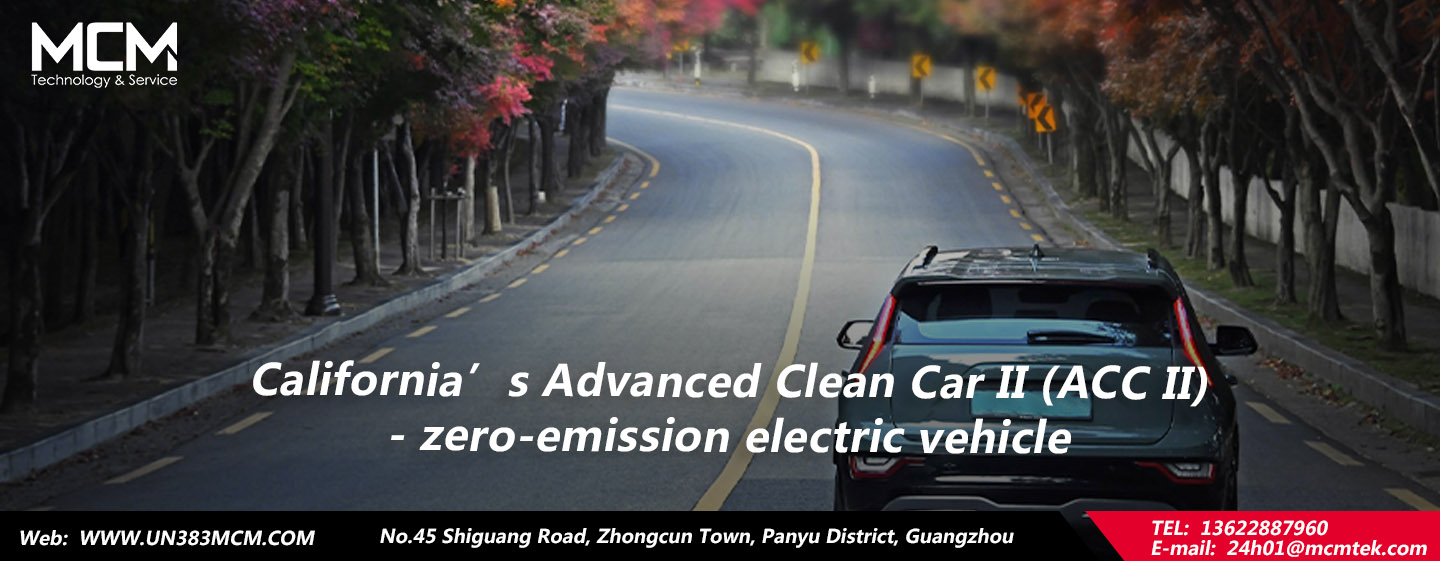California has always been a leader in promoting the development of clean fuel and zero-emission vehicles. From 1990, The California Air Resources Board (CARB) has introduced the “zero-emission vehicle” (ZEV) program to implement ZEV management of vehicles in California.
In 2020, the governor of California signed a zero-emission executive order (N-79-20) by 2035, by which time all new cars, including buses and trucks, sold in California will need to be zero-emission vehicles. To help the state get on the path to carbon neutrality by 2045, the sales of internal combustion passenger vehicles shall be ended by 2035. To this end, CARB adopted the Advanced Clean Cars II in 2022.
This time the editor will explain this regulation in the form of Q&A.
What are zero-emission vehicles?
Zero-emission vehicles include pure electric vehicles (EV), plug-in hybrid electric vehicles (PHEV) and fuel cell electric vehicles (FCEV). Among them, PHEV must have an electric range of at least 50 miles.
Will there still be fuel vehicles in California after 2035?
Yes. California only requires that all new cars sold in 2035 and beyond be zero-emissions vehicles, including pure electric vehicles, plug-in hybrids and fuel cell vehicles. Gasoline cars can still be driven in California, registered with the California Department of Motor Vehicles, and sold to owners as used cars.
What are the durability requirements for ZEV vehicles? (CCR, title 13, section 1962.7)
Durability needs to meet 10 years/150,000 miles (250,000km).
In 2026-2030: Guarantee that 70% of vehicles reach 70% of certified all-electric range.
After 2030: all vehicles reach 80% of the all-electric range.
What are the requirements for electric vehicle batteries? (CCR, title 13, section 1962.8)
The vehicle manufacturers are required to offer a battery warranty. The Advanced Clean Cars II includes provisions requiring automakers to provide a minimum warranty period of eight years or 100,000 miles, whichever first occurs.
What are the requirements for battery recycling?
The Advanced Clean Cars II will require manufacturers of ZEVs, plug-in hybrid electric vehicles and hybrid electric vehicles to add labels to vehicle batteries that provide critical information about the battery system for subsequent recycling.
What are the specific requirements for battery labels? (CCR title 13, section 1962.6)
|
Applicability |
This section shall apply to 2026 and subsequent model year zero-emission vehicles, plug-in hybrid electric vehicles, hybrid electric vehicles. |
|
Required Label Information |
1.Chemistry identifier designating the battery chemistry, cathode type, anode type, manufacturer, and date of manufacture in accordance with SAE, International (SAE) J2984;2. The minimum voltage of the battery pack, Vmin0, and the corresponding minimum battery cell voltage, Vmin0,cell when the battery pack is at Vmin0;
|
|
Label Locations |
1.A label shall be attached to the exterior of the battery such that it is visible and accessible when the battery is removed from the vehicle. For batteries that are designed such that portions of the battery pack may be separately removed.2. A label shall also be attached in a readily visible position in the engine compartment or front powertrain or cargo compartment. |
|
Label Format |
1.The required information on the label shall be in the English language;2. The digital identifier on the label shall meet the QR code requirements of (ISO) 18004:2015. |
|
Other requirements |
Manufacturers or their designees shall establish and maintain one or more websites that provide the following information related to the vehicle’s traction battery:1. All information required to be printed on the physical label under subsection.
2. Count of individual cells in the battery. 3. the hazardous substances present in the battery. 4. product safety information or recall information. |
Summary
In addition to passenger car requirements, California has also formulated the Advanced Clean Truck, which requires manufacturers to sell only zero-emission medium- and heavy-duty vehicles starting in 2036; by 2045, the truck and bus fleets driving in California will achieve zero emission. This is also the world’s first mandatory zero-emission regulation for trucks.
In addition to enacting mandatory regulations, California has also launched a car-sharing program, a clean vehicle subsidy program and a low-carbon fuel standard. These policies and programs have been implemented in Canada and other states in the United States.
Post time: Jan-05-2024

